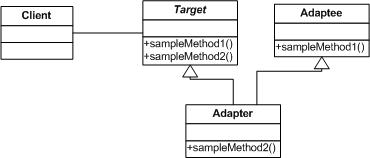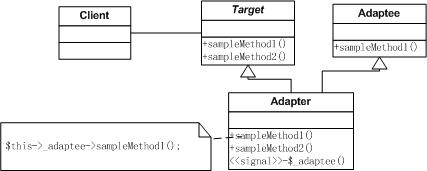PHP设计模式笔记:使用PHP实现策略模式
【意图】
定义一系列的算法,把它们一个个封装起来,并且使它们可相互替换。策略模式可以使算法可独立于使用它的客户而变化
策略模式变化的是算法
【策略模式结构图】
【策略模式中主要角色】
抽象策略(Strategy)角色:定义所有支持的算法的公共接口。通常是以一个接口或抽象来实现。Context使用这个接口来调用其ConcreteStrategy定义的算法
具体策略(ConcreteStrategy)角色:以Strategy接口实现某具体算法
环境(Context)角色:持有一个Strategy类的引用,用一个ConcreteStrategy对象来配置
【策略模式的优点和缺点】
策略模式的优点:
1、策略模式提供了管理相关的算法族的办法
2、策略模式提供了可以替换继承关系的办法 将算封闭在独立的Strategy类中使得你可以独立于其Context改变它
3、使用策略模式可以避免使用多重条件转移语句。
策略模式的缺点:
1、客户必须了解所有的策略 这是策略模式一个潜在的缺点
2、Strategy和Context之间的通信开销
3、策略模式会造成很多的策略类
【策略模式适用场景】
1、许多相关的类仅仅是行为有异。“策略”提供了一种用多个行为中的一个行为来配置一个类的方法
2、需要使用一个算法的不同变体。
3、算法使用客户不应该知道的数据。可使用策略模式以避免暴露复杂的,与算法相关的数据结构
4、一个类定义了多种行为,并且 这些行为在这个类的操作中以多个形式出现。将相关的条件分支移和它们各自的Strategy类中以代替这些条件语句
【策略模式与其它模式】
Template模式:模板方法模式与策略模式的不同在于,策略模式使用委派的方法提供不同的算法行为,而模板方法使用继承的方法提供不同的算法行为
享元模式(flyweight模式):如果有多个客户端对象需要调用 同样的一睦策略类的话,就可以使它们实现享元模式
【策略模式PHP示例】
1 2 3 4 5 6 7 8 9 10 11 12 13 14 15 16 17 18 19 20 21 22 23 24 25 26 27 28 29 30 31 32 33 34 35 36 37 38 39 40 41 42 43 44 45 46 47 48 49 50 51 52 53 54 55 56 57 58 59 60 61 62 63 64 65 66 67 68 69 70 71 72 73 74 75 76 77 78 79 80 81 82 83 84 85 86 87 88 89 90 91 92 93 | <?php /** * 策略模式的PHP简单实现 2010-07-25 sz * @author 胖子 phppan.p#gmail.com http://www.phppan.com * 哥学社成员(http://www.blog-brother.com/) * @package design pattern */ /** * 抽象策略角色,以接口实现 */ interface Strategy { /** * 算法接口 */ public function algorithmInterface(); } /** * 具体策略角色A */ class ConcreteStrategyA implements Strategy { public function algorithmInterface() { echo 'algorithmInterface A<br />'; } } /** * 具体策略角色B */ class ConcreteStrategyB implements Strategy { public function algorithmInterface() { echo 'algorithmInterface B<br />'; } } /** * 具体策略角色C */ class ConcreteStrategyC implements Strategy { public function algorithmInterface() { echo 'algorithmInterface C<br />'; } } /** * 环境角色 */ class Context { /* 引用的策略 */ private $_strategy; public function __construct(Strategy $strategy) { $this->_strategy = $strategy; } public function contextInterface() { $this->_strategy->algorithmInterface(); } } /** * 客户端 */ class Client { /** * Main program. */ public static function main() { $strategyA = new ConcreteStrategyA(); $context = new Context($strategyA); $context->contextInterface(); $strategyB = new ConcreteStrategyB(); $context = new Context($strategyB); $context->contextInterface(); $strategyC = new ConcreteStrategyC(); $context = new Context($strategyC); $context->contextInterface(); } } Client::main(); ?> |



